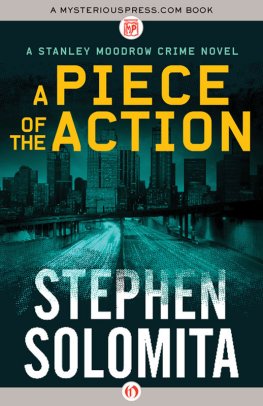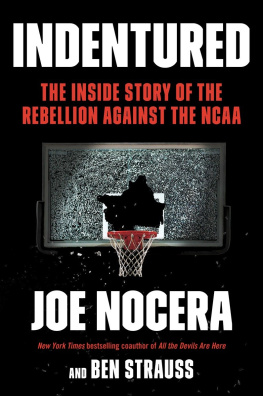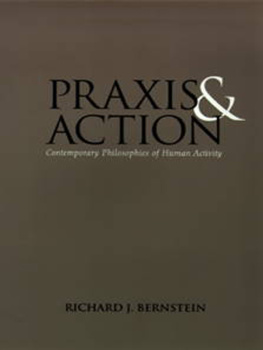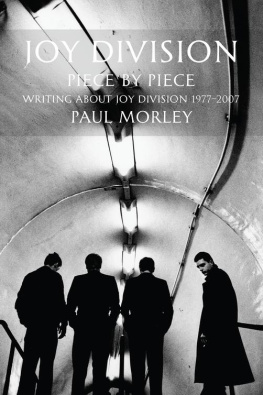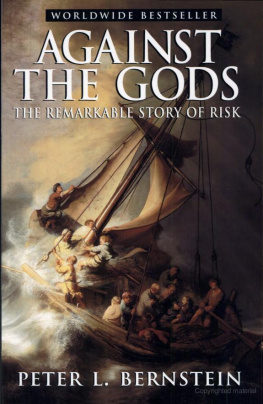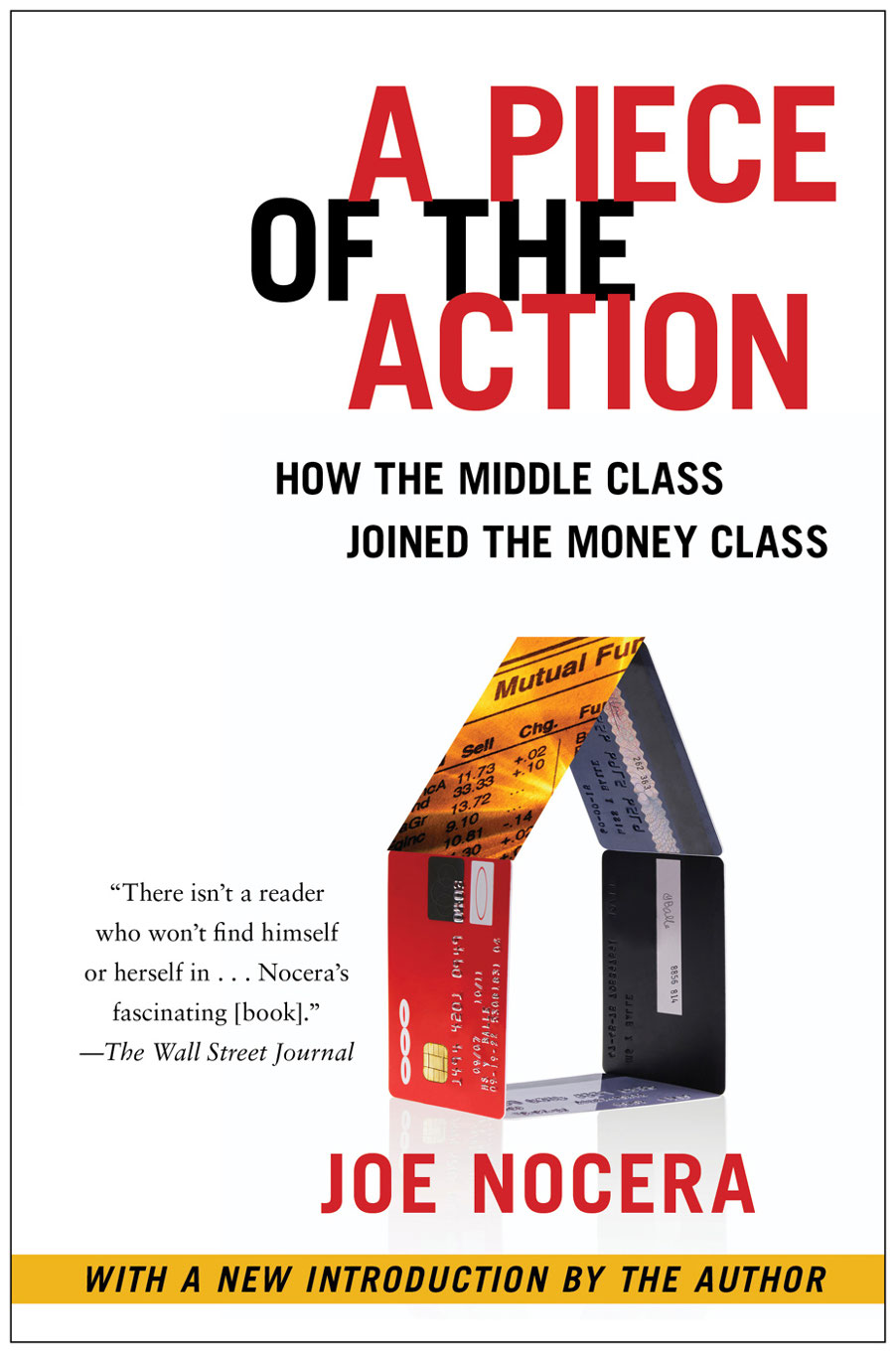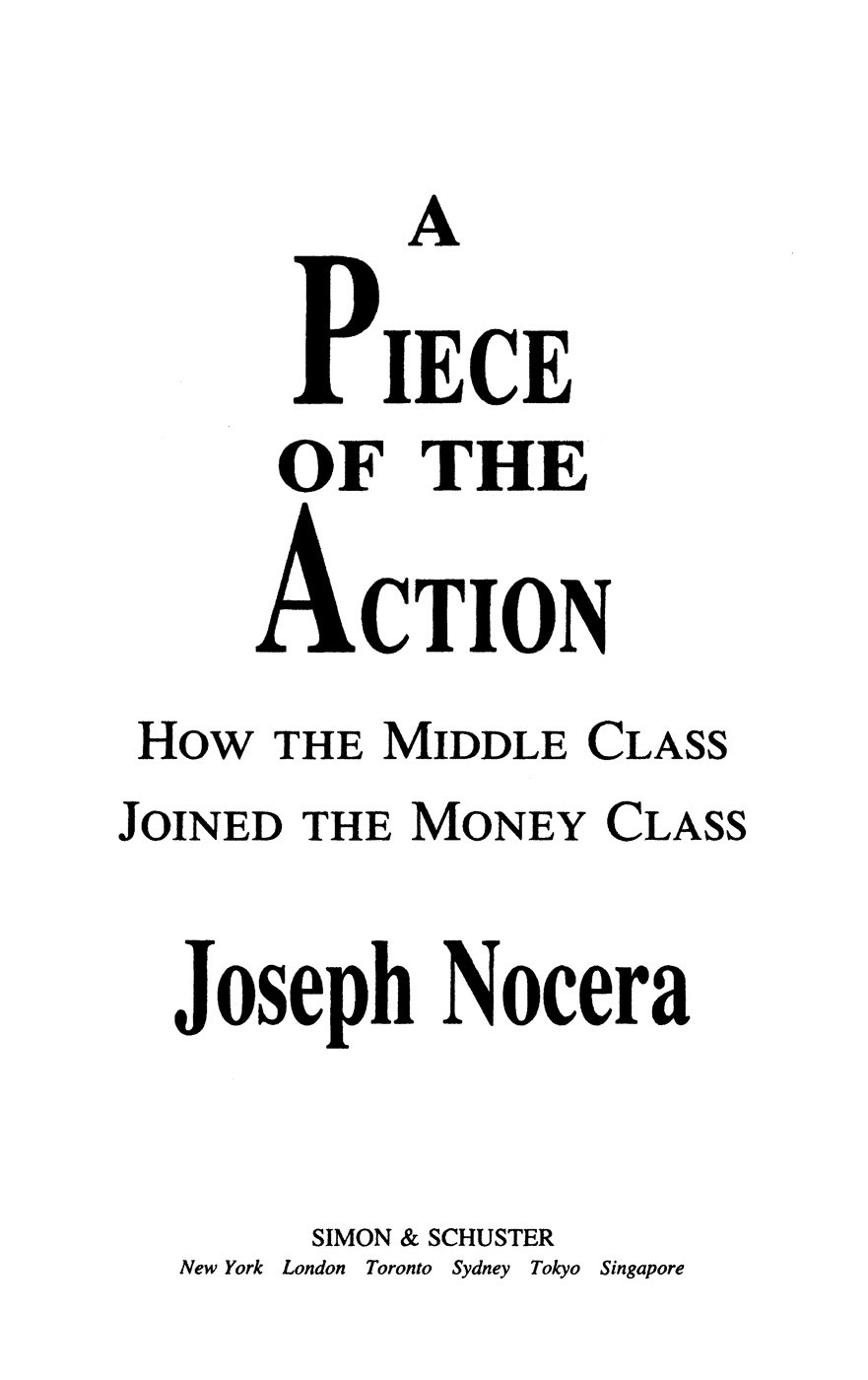For Julie
The Unintended Consequences
For the longest time, the editor of this book, Alice Mayhew, had planned to call it The Sunny Side of the Street. Its easy enough to see why. A Piece of the Actiona title she tossed at me at the very last minute, and which I immediately embracedis about the historical process by which millions of middle-class Americans went from being saverspeople who kept their money in the bank and spent it frugallyto being unrepentant borrowers and investors. It traces the invention of products like credit cards, mutual funds, and individual retirement accounts, as well as events like the Age of Inflation in the late 1970s, which helped change the way people thought about and dealt with their money. It also tells the stories of a handful of men who were there at the creation, men like Charles Merrill, the flamboyant founder of Merrill Lynch; Peter Lynch, the investing guru who managed the Fidelity Magellan Fund; and Charles Schwab, who transformed his eponymous company into the nations biggest discount broker. During the six years it took me to complete A Piece of the Action, I came to think of the subject of this book as the democratization of money.
When I phrase it that waywhen I cast this process as the leveling of the playing field between the wealthy and everyone else (How The Middle Class Joined The Money Class!)it sounds like an unalloyed good. Thanks to the money revolution I was chronicling, middle-class Americans could invest without the help, or the pricey commissions, of a broker. With the widespread use of credit cards, they could take out an unsecured loan whenever they felt like it, without having to put up any collateral or haggle with a bank officer. They could hand their money to a top-notch fund manager like Peter Lynch and sit back and relax as he earned them double-digit returns. One consequence of my enthusiasm for my subject matter is that the tone of A Piece of the Action is unapologetically optimistic; there is buoyancy to the storytelling that Im not sure I ever again matched. Yes, I noted here and there that most of us lacked the skills of a Peter Lynch. And I knew, even then, that once the culture of investing had us in its grip, there were going to be losers as well as winners. But I was convinced that, eventually, we would learn how to use the new financial tools we were being handed, and our lives would be better as a result. The sunny side of the street indeed.
Here we are almost twenty years later, and it hasnt exactly worked out that way. The tools that I wrote about in A Piece of the Actionmoney market funds, mutual funds, and, especially, 401kscan be found in most Americans portfolios. Small investorsand there are millions more than there used to behold individual stocks like Apple and Walmart and Google. People today have little choice in the matter: if they hope to afford their childrens college tuition, not to mention their own retirement, they have to be in the stock market. In other words, the transformation of the middle class into a new kind of investing class, which I both chronicled and predicted in A Piece of the Action, has largely happened.
And yet, and yet... Are most investors happy with the investing and borrowing tools that are now at their disposal? Not really. Have they succeeded in investing for a pleasant retirement? Far too often, no. Theyve been through the Internet bubbleand bustand then the housing bubble and bust. More often than theyd care to admit, theyve bought high and sold low. The typical baby boomer nearing retirement age has less than $100,000 in his or her 401knot even close to whats needed for a comfortable retirement. Mutual funds have largely disappointed. The debt weve been able to pile up thanks to credit cards has been more a burden than a blessing. Many people cant even bear to look at their portfolios; its too painful.
To reread A Piece of the Action with the benefit of hindsight, as I did in preparing to write this introduction, is to inevitably wonder how a movement that had begun with such hopefinancial idealism, you might call ithas turned out to be so treacherous for so many people. Thats the question I want to try to address here.
Though Ive sometimes been characterized as a writer who chronicles the financial markets, I have never thought of myself that way. I wrote my first business storyand found my vocationin the summer and fall of 1982. I was thirty years old and had just moved to Austin, Texas, to take a job as a staff writer with Texas Monthly. Assigned to write about T. Boone Pickens, I stumbled into his first big takeover attempt, and found myself enthralled by the world of business that had opened up before me. Although my reporting for that story coincided with the start of the bull market of the 1980s (which began in mid-August, 1982), my article was only tangentially about the stock market. My subsequent business stories for Texas Monthly had even less to do with the market.
It wasnt until I moved back to the east coast in late 1986 that I began to pay more attention to the ups and downs of the stock marketthough in truth, there hadnt been many down days over the previous five years. By then, I had a small Individual Retirement Account, and, like millions of others, I had moved my money from a bank savings account to a money market fund, a historical process I describe in Part II of A Piece of the Action. But I was hardly a serious investor. Rather, my interest was journalistic: the stock market, which had rarely even been in my peripheral vision, was now inescapable. I could scarcely go to a dinner party without the talk eventually turning to stocks and mutual funds. At some point during the bull market, the network news shows had begun announcing the closing prices of the New York Stock Exchange and NASDAQ. Peter Lynch seemed to be peering out from every magazine. Brokerage houses were advertising in prime time (When E. F. Hutton talks; We make money the old-fashioned way; Merrill Lynch is bullish on America). In Boston, the Herald, a tabloid then owned by Rupert Murdoch, began running a stock market game for its readers. I would wander into the Fidelity Investments office on Park Avenue in New York just to take in all the activity. Some people were transacting business, but others just came in to look at stock quotes for a while before heading back to work. Id never seen anything like it.
What I was observing, of course, was the frenzy that invariably takes place when a bull market is nearing its peak. But I was too green to understand that. One day early in 1987 I had a meeting with Lee Eisenberg, the editor of Esquire. He, too, had noticed that more and more people had become interested in the stock market and mutual fundsincluding, to his amazement, his own mother. He, too, had gone into the Park Avenue office of Fidelity and emerged wondering what in the world was going onwhat had happened to cause Americans to become so caught up in the stock market. He assigned me a story about Fidelity, with the hope that that story would explain it. That piece, published nearly a year later, was titled The Ga-Ga Years (a play on The Go-Go Years, a great book about the investment bubble in the 1960s by John Brooks, who for many years was The New Yorkers only business writer). My Esquire story included Bruce Bent, the originator of the money market fund, Marshall Loeb, the longtime editor of Money magazine, and Ned Johnson and Peter Lynch of Fidelity. All of these men were later characters in A Piece of the Action. Indeed, there are several scenes in the book that were more or less lifted from that Esquire storymost notably, the Fidelity scenes in chapter 17 that take place just before and just after Black Monday, that awful day in October 1987 when the stock market lost 23 percent of its value, and it looked for a brief moment as though America was going to lose its taste for investing.


